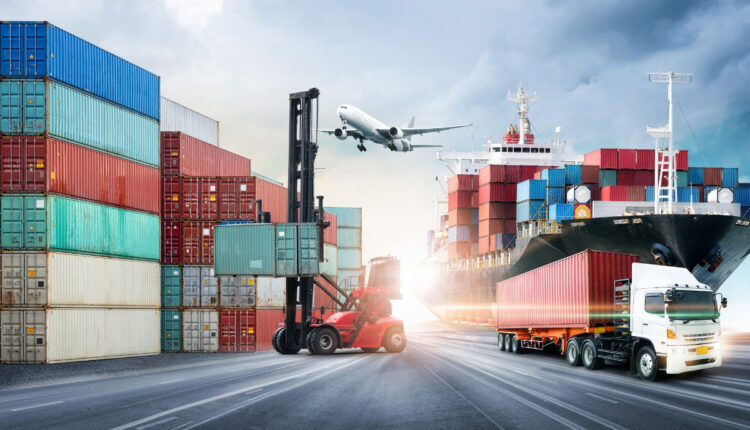While this technology has existed for over twenty years, healthcare and automotive companies are increasingly realizing the potential of RTLS
Industries like healthcare and automotive have one very important thing in common: the need to know where their critical assets are at all times. While seemingly simple, in such busy and sometimes chaotic settings, things aren’t always where they should be–often resulting in wasted time, effort, and financial resources. And considering the potential for a global recession and prolonged supply chain crunch, businesses cannot afford to lose money from poor (or nonexistent) asset tracking.
Now more than ever, real-time asset visibility is critical. Consequently, many companies are considering the benefits of real-time location services (RTLS). Until recently, though, deploying this technology was too expensive, complex, and disruptive to deliver ROI and justify the expense.
Out with the Old, in with the New
RTLS goes back to the early 2000s, but these initial iterations had many drawbacks. They were either accurate but incredibly expensive or more affordable but not reliable enough to lead to meaningful improvements in efficiency. In particular, ultrasound- and infrared-based solutions require extensive installations of ceiling-mounted infrastructure.
The deployment of this type of RTLS technology in a hospital environment, for example, would turn it into a construction site, putting rooms and hallways out of service and requiring abatement projects to mitigate the environmental impact of doing things like moving ceiling tiles. In turn, this drove up the overall cost of the solution making a positive and palatable timeframe ROI highly unlikely.
In response to the dilemma of being too expensive, alternatives like Bluetooth Low Energy (BLE) and Wi-Fi RTLS technology arose. Although they were lightweight and low-cost, these solutions weren’t wholly consistent, never being able to produce location data reliable and accurate enough to deliver insights that could lead to ROI.
However, thanks to advancements in cloud, AI, and machine learning (ML), the next generation of RTLS technology can provide greater levels of accuracy at an affordable price by leveraging the cloud and wireless connectivity to eliminate the disruptive and costly installation processes. This new, disruptive iteration is causing previously reluctant organizations to reconsider how the technology can help their operations.
How RTLS Can Support Various Industries
Automobile manufacturing is one of the most delicate supply chains in the world. Thankfully, the newest generation of RTLS technology brings light to the darkest corners of this supply chain, which, in the case of the automobile industry, is the inbound and outbound marshaling yards around their warehouses and factories.
Rather than hiring an army of employees to search for missing cars, automotive OEMs and Vehicle Processing Centers (VPCs) can easily determine the location of every vehicle across their large lots and yards with the click of a button. For example, the finished vehicle logistics (FVL) industry has been dealing with challenges resulting from the recent supply chain woes, amplifying existing problems of locating and keeping track of inventory and assets.
Deploying RTLS technology into these industries provides full and accurate visibility of vehicles to get them staged and ready to be hauled to the dealers, thus leading to better “on time, in full” vehicle delivery rates and an overall increase in customer satisfaction.
Another example is hospitals and their use of RTLS in asset management. Before adopting the latest RTLS technologies, hospitals struggled to effectively manage critical assets, like IV pumps, wound vacs, and ventilators. To ensure nurses and physicians had immediate access to these tools, they resorted to buying more; that way, even if misplaced, an employee could always find an available one. However, as a result, hospitals tied up lots of money in unused equipment and ended up accumulating large amounts of excess inventory.
With access to data indicating how equipment moves around their facility, hospitals can optimize asset utilization and right-size their equipment fleet while predicting trends that require improved planning. For example, RTLS technology can enhance the real-time visibility of clean and soiled rooms through self-reported inventory levels. Should the inventory fall below a set threshold, the system will notify relevant teams and provide room-specific details to ensure PAR levels are steadily maintained. And by leveraging historical data, hospitals can refine workflows and spot and resolve issues before they arise, generating even more opportunities to cut costs.
RTLS not only enables hospitals to find their missing assets rapidly, but it also helps them improve processes, increasing asset utilization rate and, ultimately, patient care. Indeed, the real value of RTLS technology is not finding lost things but ensuring they never go missing in the first place.
It All Comes Back to Data
Perhaps most important to all of this is the role of data. As evident in both healthcare and automotive applications, data is a constant undercurrent of the benefits of RTLS because it allows these companies to collect and extract valuable insights to support their supply chains. Plus, the newest versions of RTLS layer on technology like ML, AI, and the cloud, enabling businesses to collect even more data for better insights. Additionally, ML and AI can empower brands to make higher-quality inferences. This arms companies of all sizes and technical prowess with the knowledge to make better business decisions, understand ROI, and plan for future innovation.
Adrian Jennings is a Grit Daily contributor and the Chief Product Officer at Cognosos, a company that’s innovating with software-defined radio (SDR) and cloud-based signal processing to democratize the Internet of Things (IoT).
Credit: Source link


Comments are closed.